This Brew's for You! The Basics of Coffee Roasts
Today let’s talk roasts: what they are, what they aren’t, and how to choose your favorite(s). While we dedicated coffee drinkers know what we like, we often don’t know why we like it. Or, with a little more coffee smarts to our credit, we might find out that we don’t really like what we’ve been drinking all along!
How is Coffee Roasted?
Depending on the roaster’s preference and the amount of coffee needed, roasting vessels can take on different forms, from as simple as a cast iron skillet to large-scale, fully automated convection ovens. No matter how it’s done, roasting requires a combination of know how, technique, and instinct that comes from experience. While we place value on high-quality beans, the truth is, even mediocre beans can produce a good cup of coffee if the roasting is well executed.
The roasting process is straightforward: Beans are heated in the vessel of choice, with temperature and time period depending on the desired end product. All beans begin in the drying phase. In the early stage of heating, around 256 degrees (F), the Maillard reaction works to form flavor and aroma. For the darkest roasts, temperature will go all the way up to almost 500 degrees (F).
There’s a wide array of descriptions for coffee roasts along the spectrum from light to dark. For simplicity’s sake, we’ll go with this scale. Light roast will be heated for the shortest amount of time and dark roast will be heated the longest. Given that, medium and medium-dark roasts are self-explanatory.
Caffeine Content
Because dark roast coffee has such a strong taste, it’s often associated with a higher caffeine content. The reverse is actually true—if we are technical. When we measure by volume and not weight (which is what happens when we scoop our pre-ground or freshly ground beans into our coffee maker of choice), dark roast has less caffeine, but the difference in the amount is negligible.
Here’s how it works: As coffee beans are heated, they lose more and more of their water content and, in turn, become less dense. Simply put, the longer they roast, the bigger they grow. Because dark roast is heated for the longest period of time, these beans end up being the largest. With that in mind, a scoop of dark roast will require fewer beans than a scoop of any lighter roast. On the flip side, if we weigh the beans instead of scooping them, it will take a few extras on the dark roast side to measure up.
How Do Different Coffee Roasts Taste?
If you roast and brew them well, they all taste good! That aside, different roasts have distinct “personalities,” if you will. The flavors along the spectrum from light to dark are influenced by the roasting process itself, as well as by factors such as species and place of origin.
Light roast coffee tends to be dismissed as weak, probably because of the connotations of the word “light,” or maybe due to a poorly brewed cup that actually tasted weak. When done correctly, light roasts boast a dynamic flavor profile. This type of roast can be ruined by cream and sugar, so it’s the best to enjoy it black.
Medium roast is what a majority of people drink at home. Not quite as acidic as light roast and not quite as bitter as dark roast, it’s your basic breakfast blend that stands up well to variables like brewing errors or the addition of cream and sugar.
Dark roast is the most forgiving. In other words, it’s harder to make dark roast taste bad via subpar brewing. When beans are roasted longer, the acidity and other flavor factors all but disappear. What’s left is a bean that has a strong, bitter flavor—and that’s about it. This low margin of error for flavor makes dark roast a perfect candidate for mass production.
Has this post tempted you to try a new roast? What’s your favorite? Tell us in the comments below!





